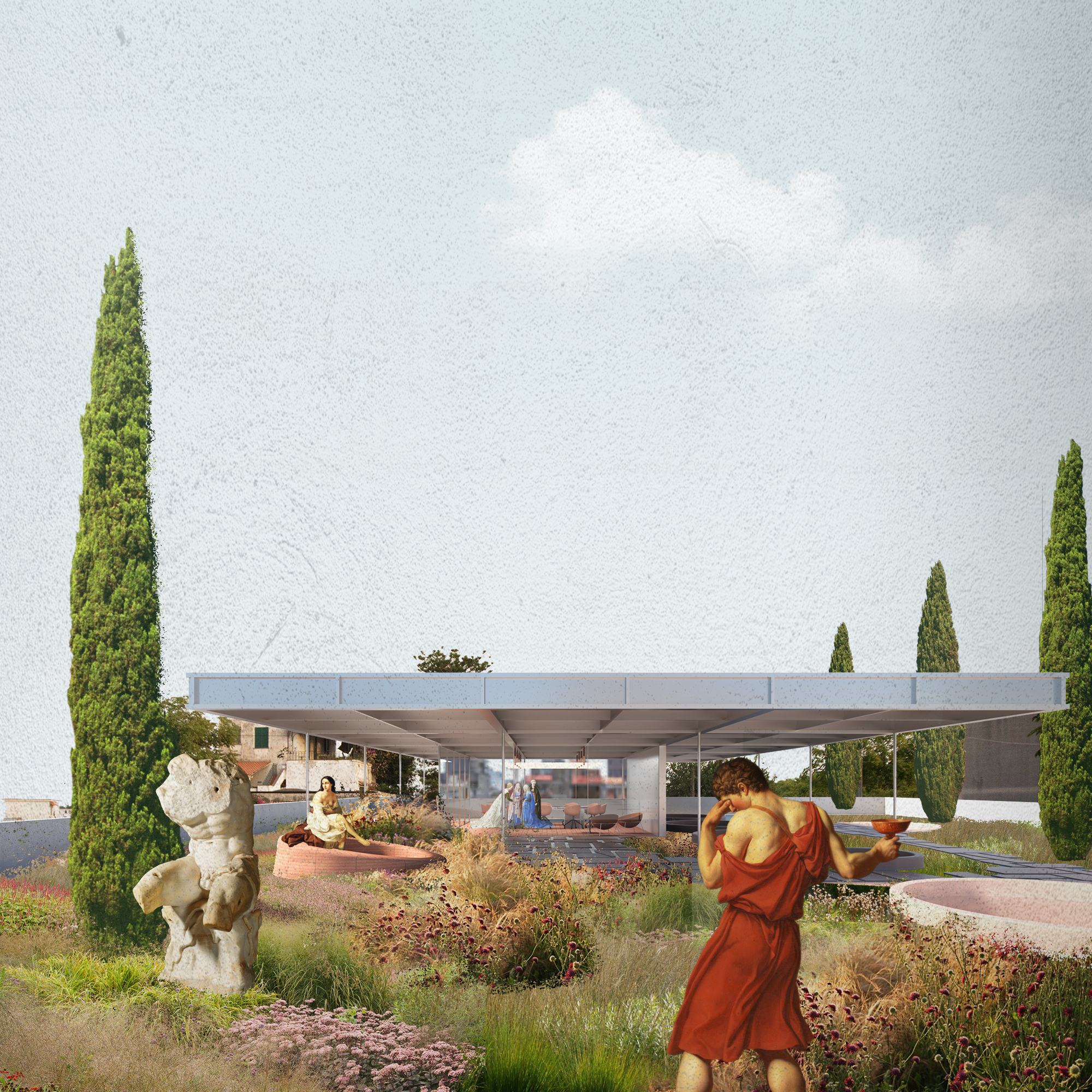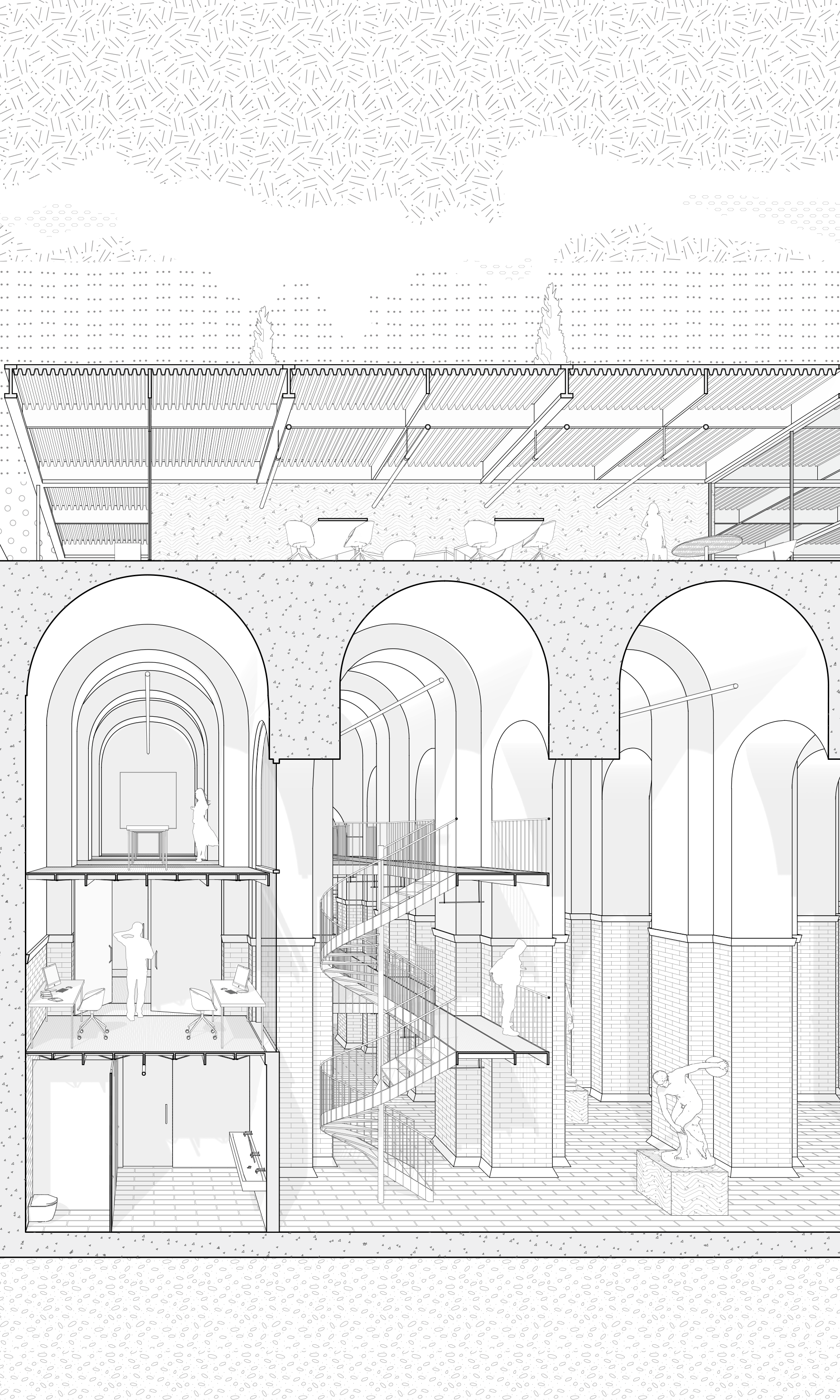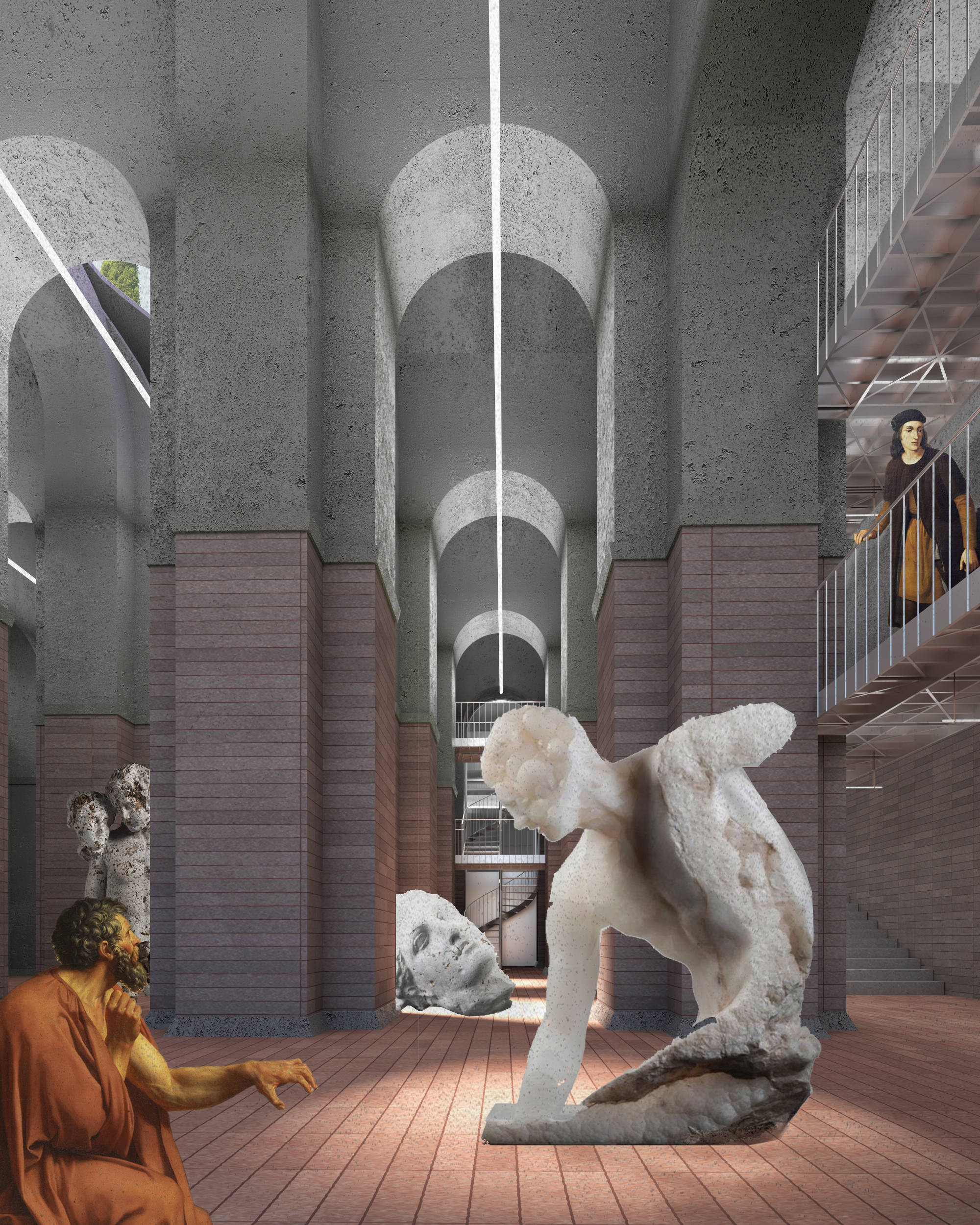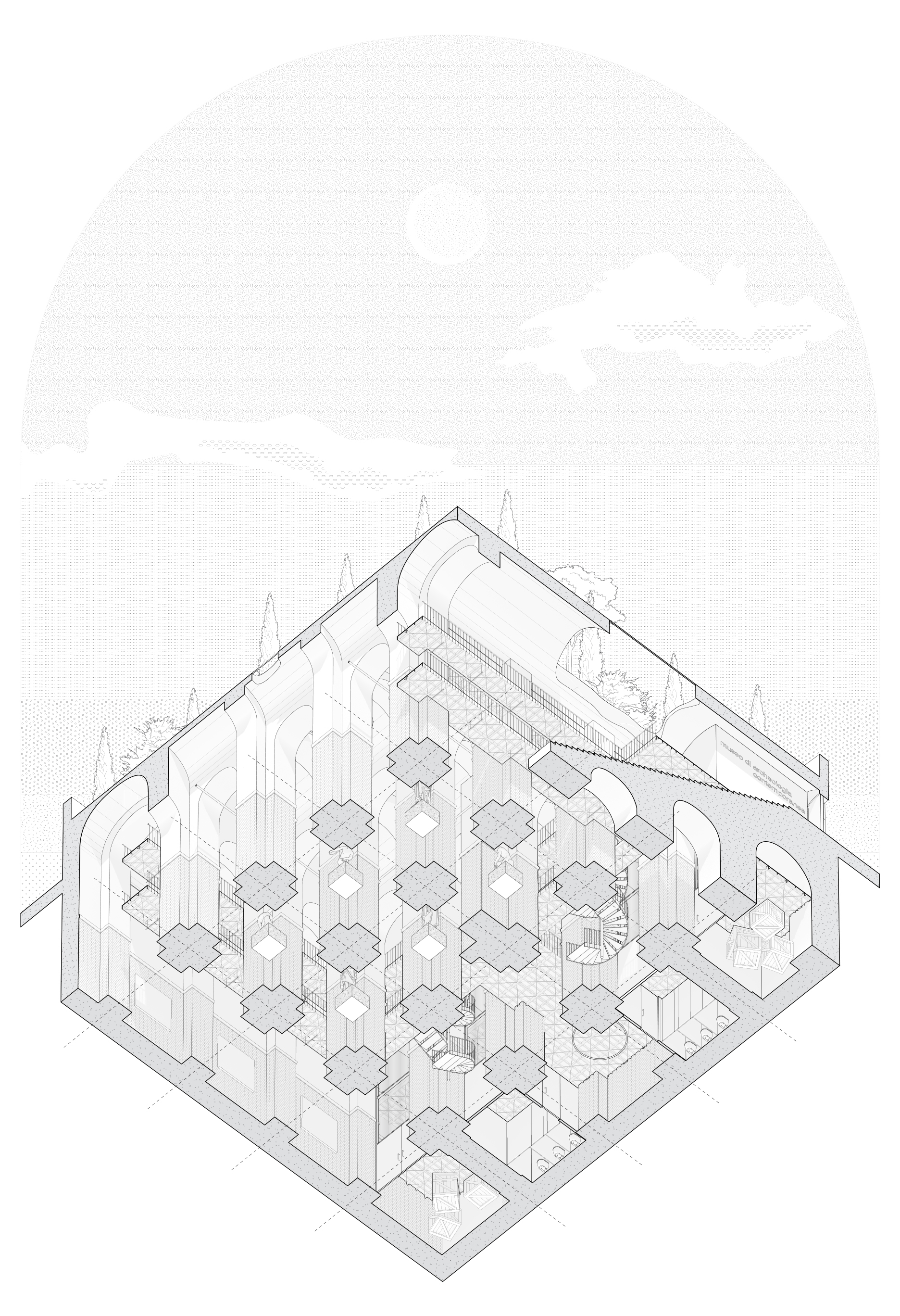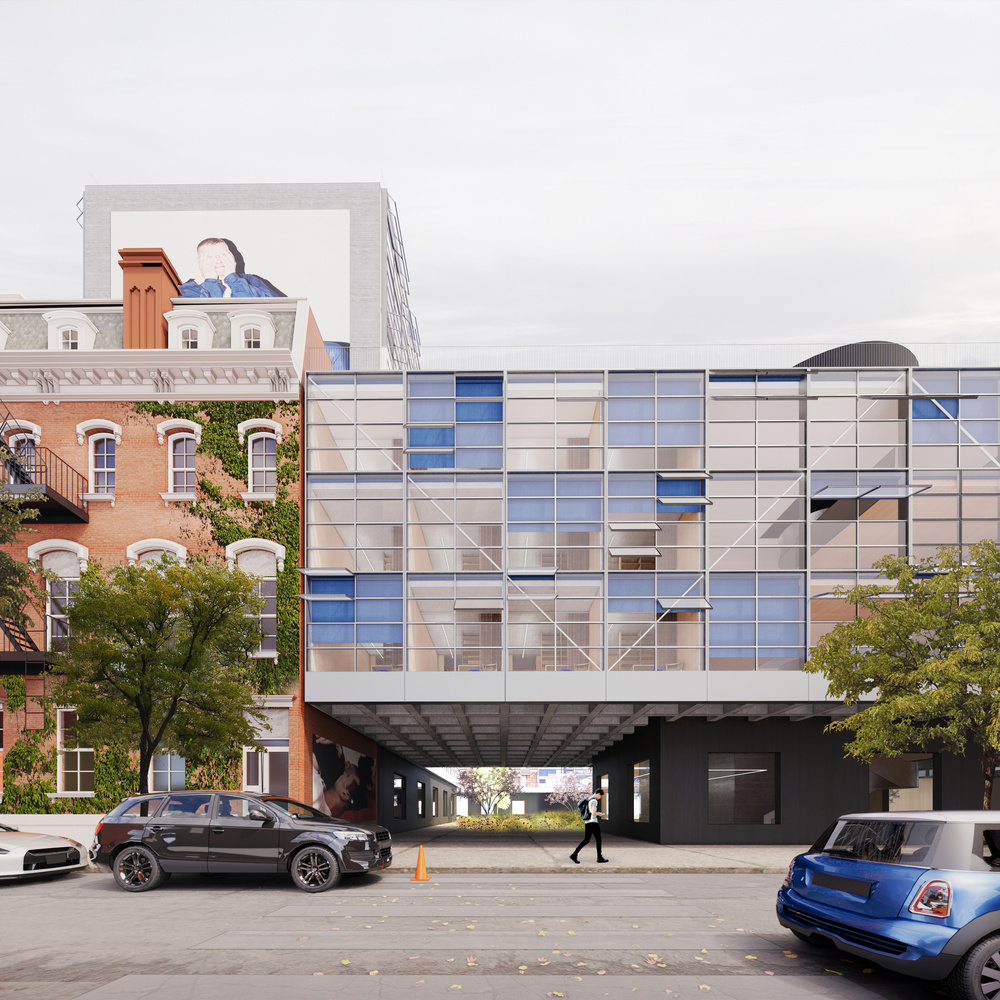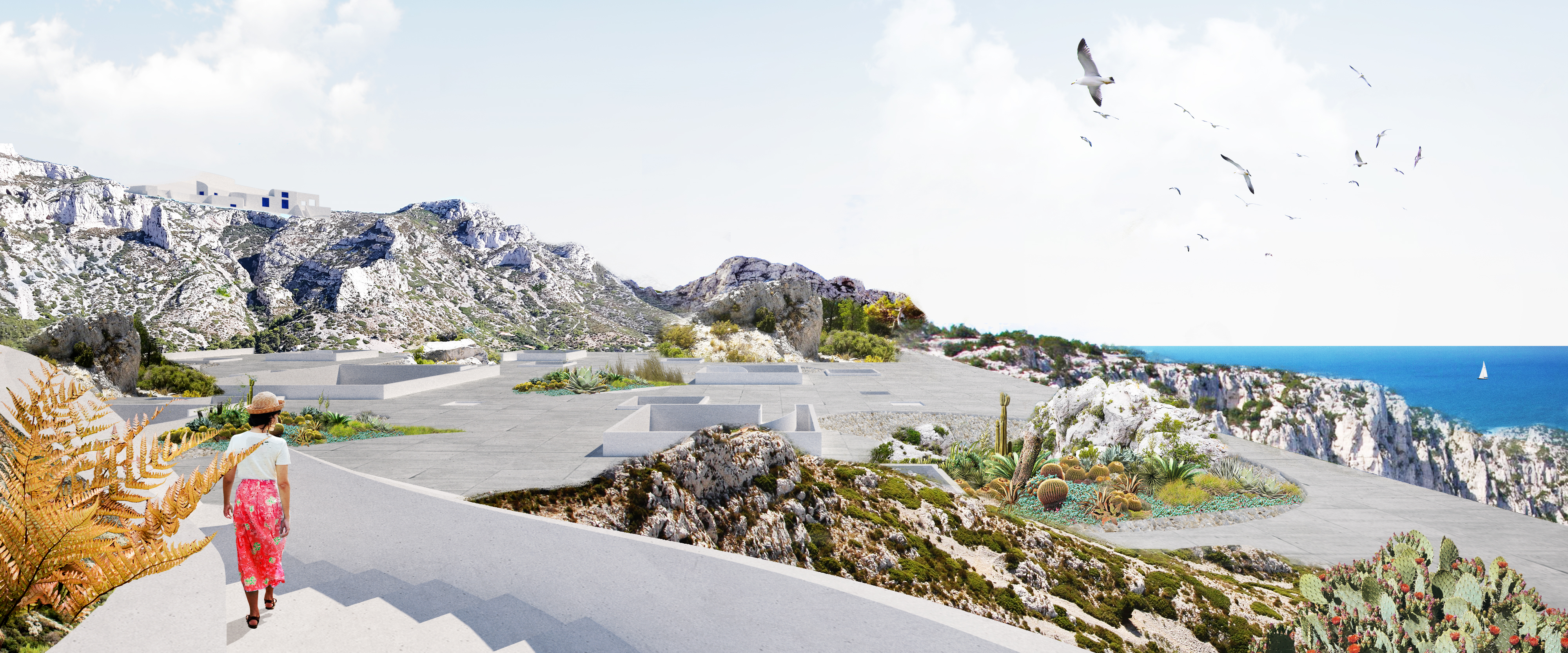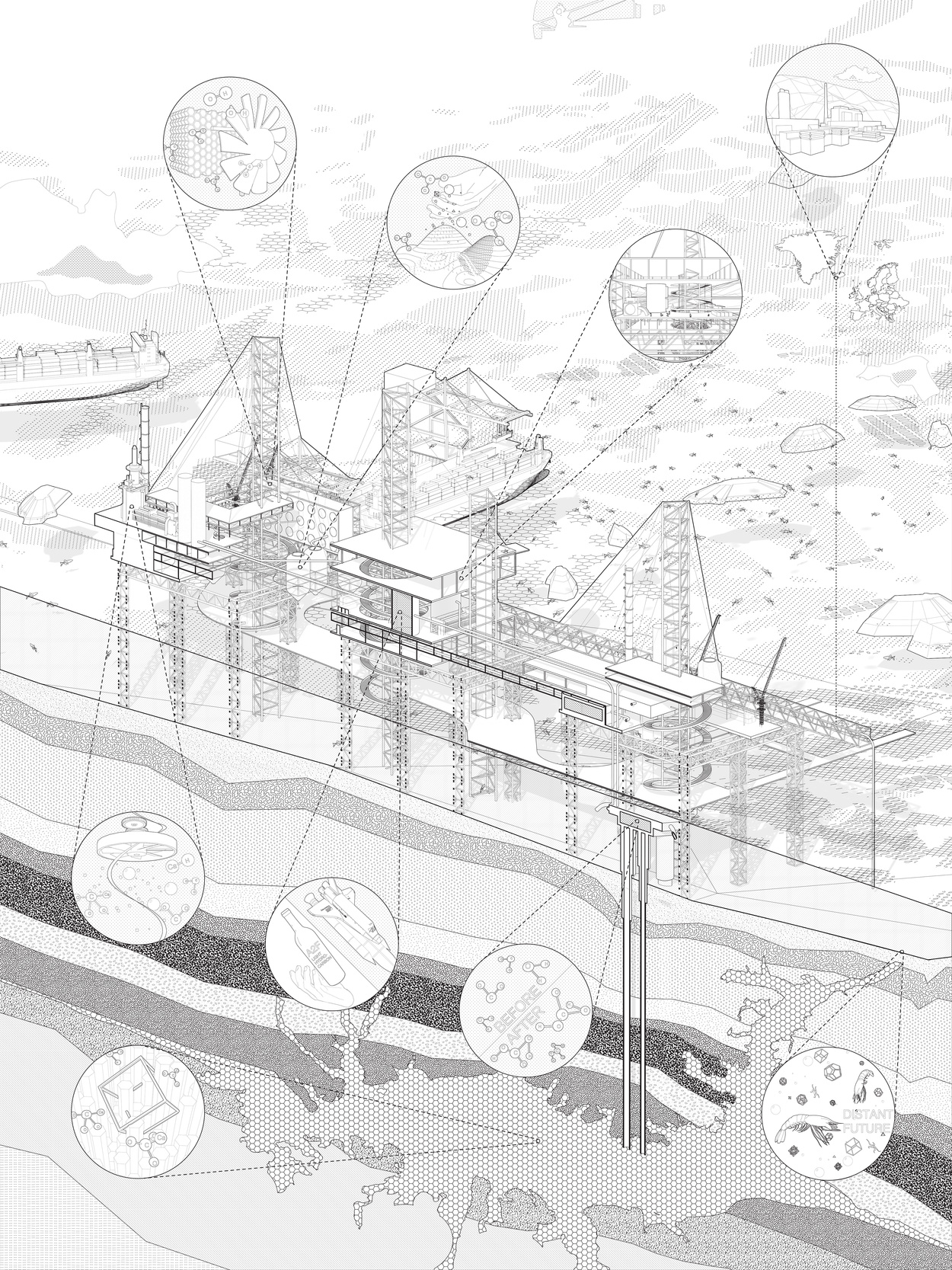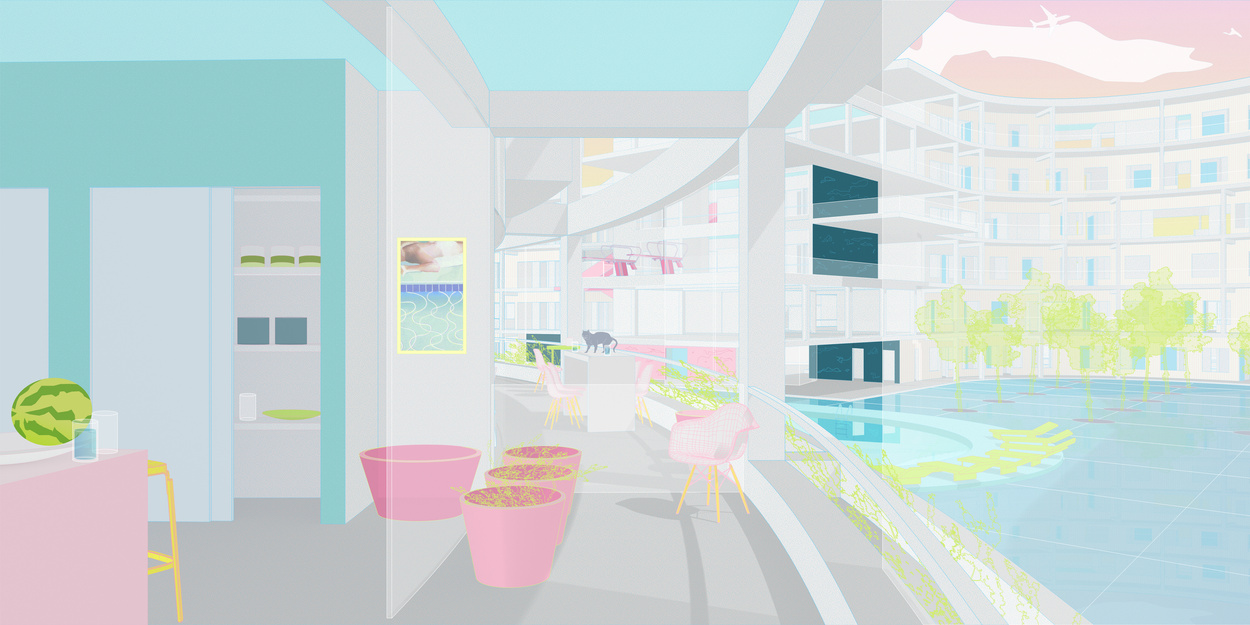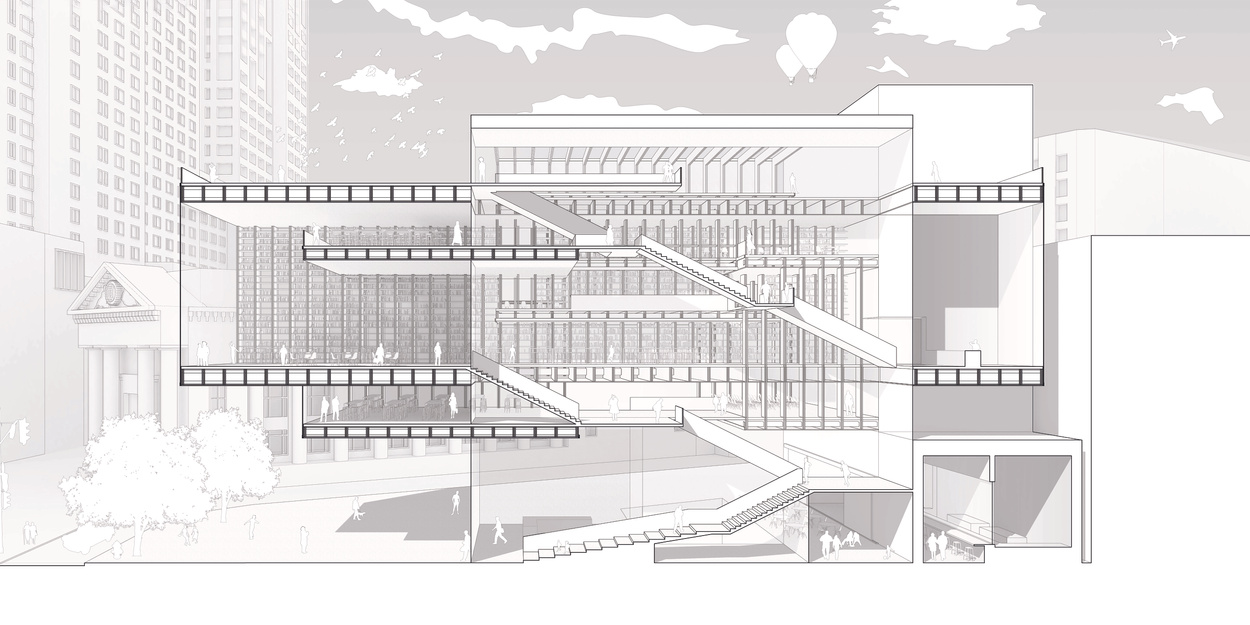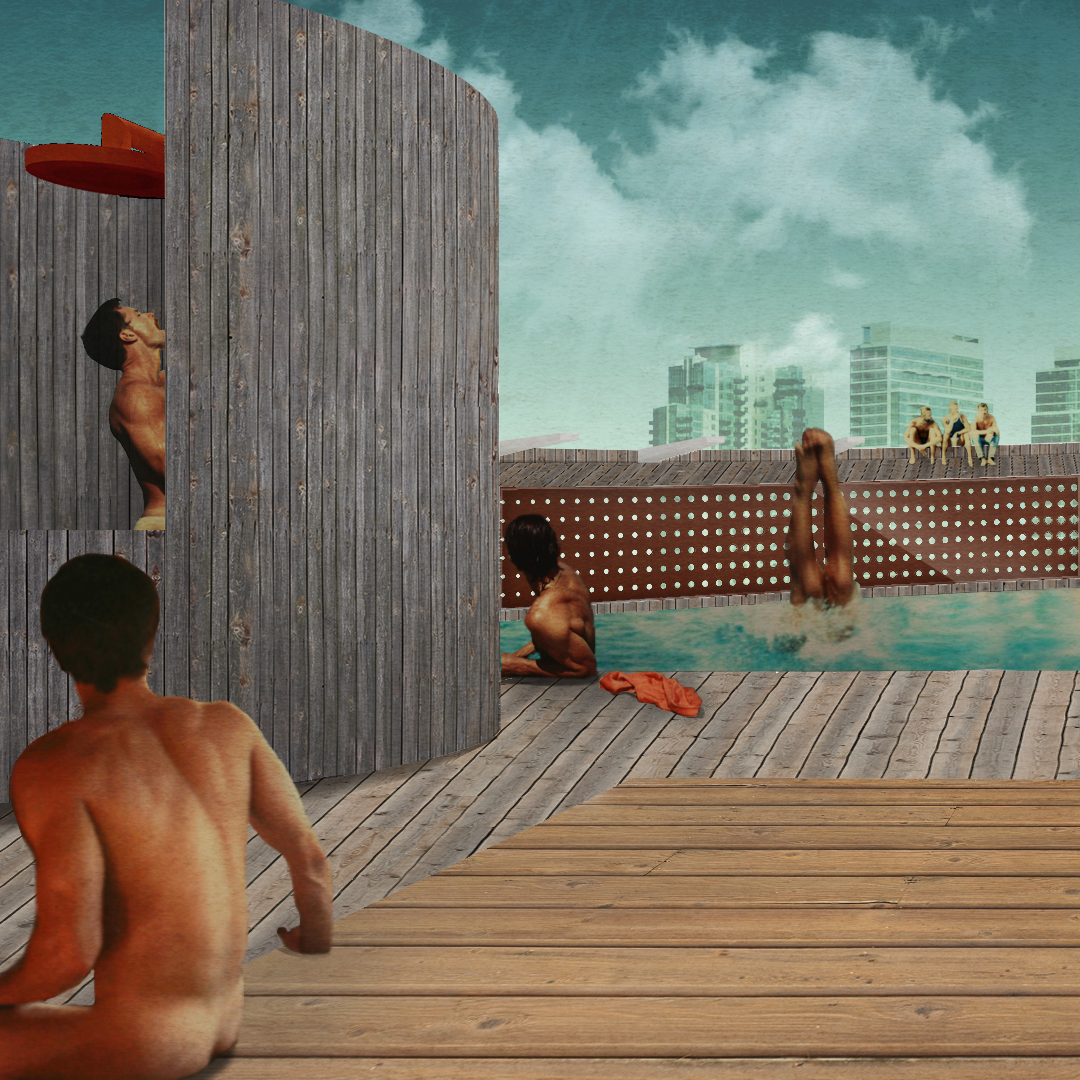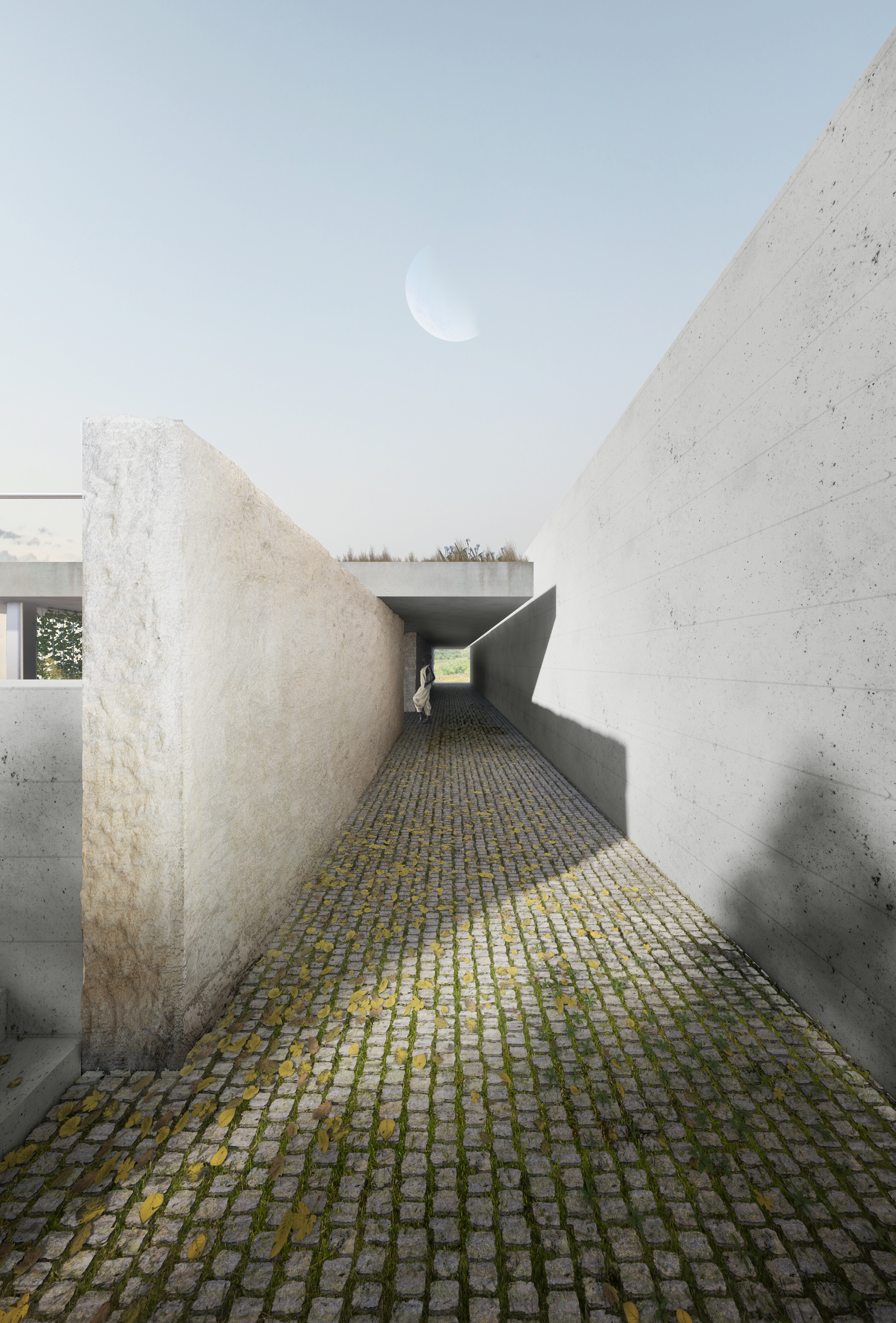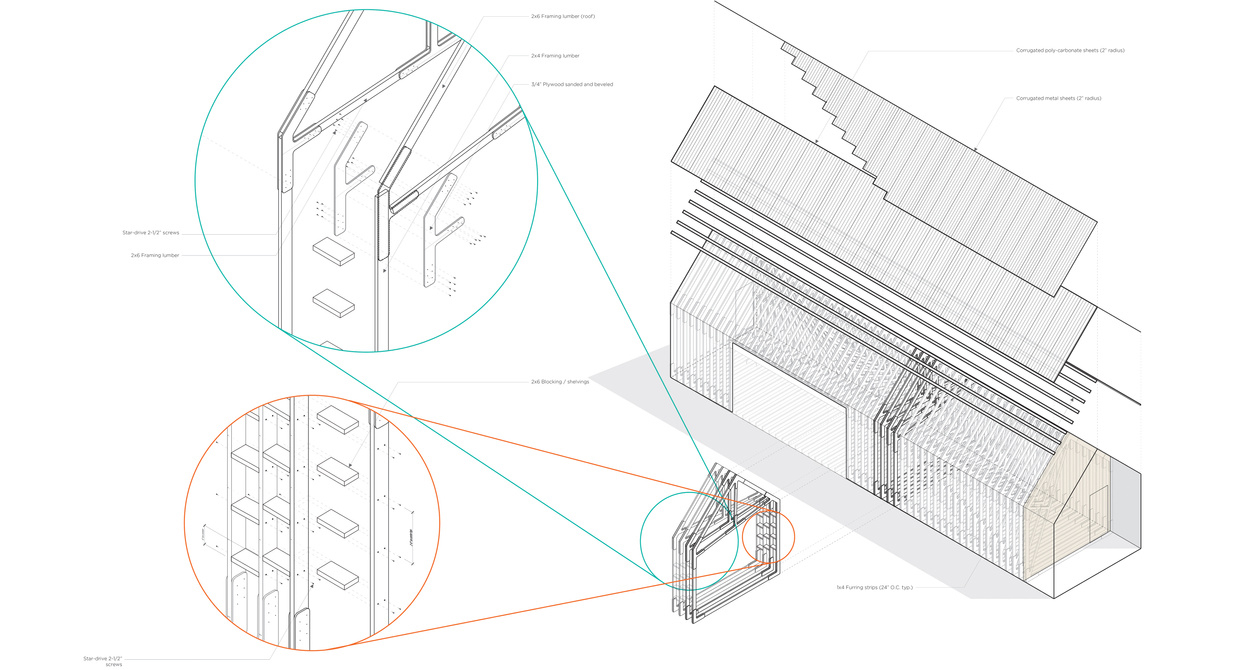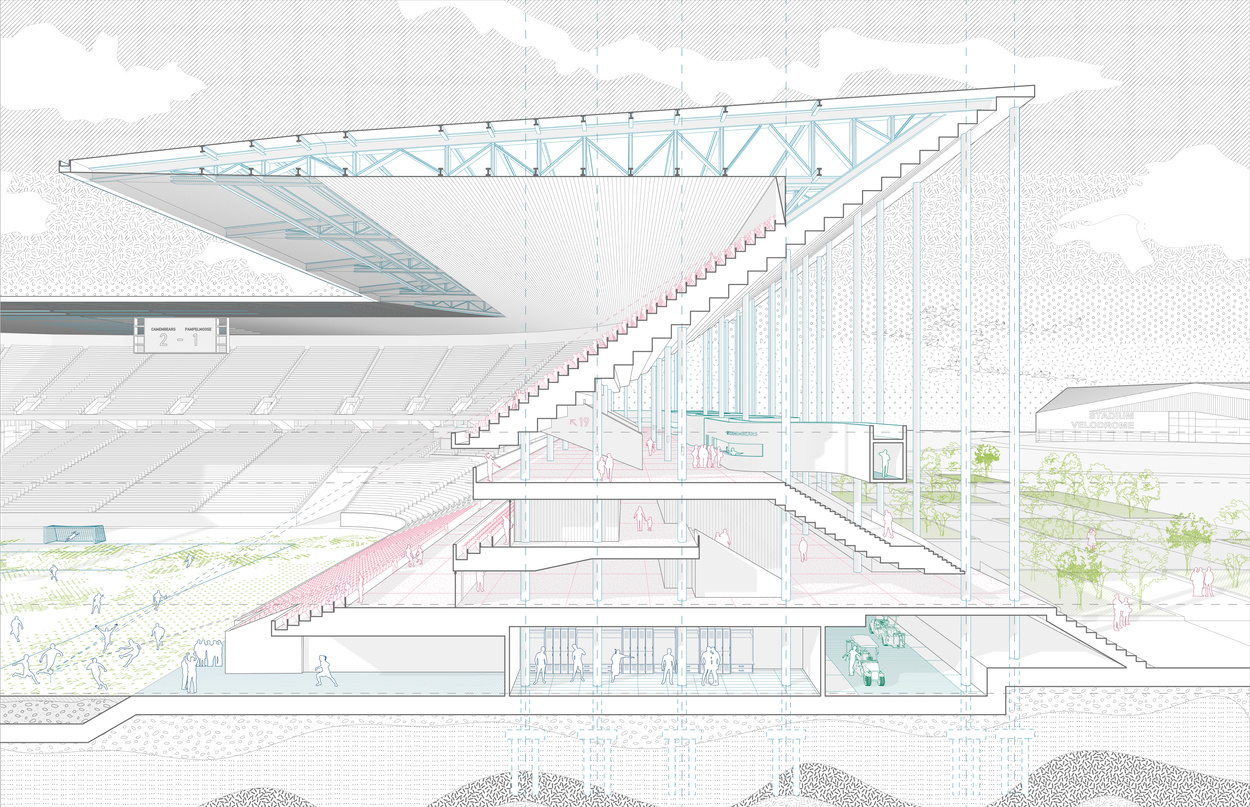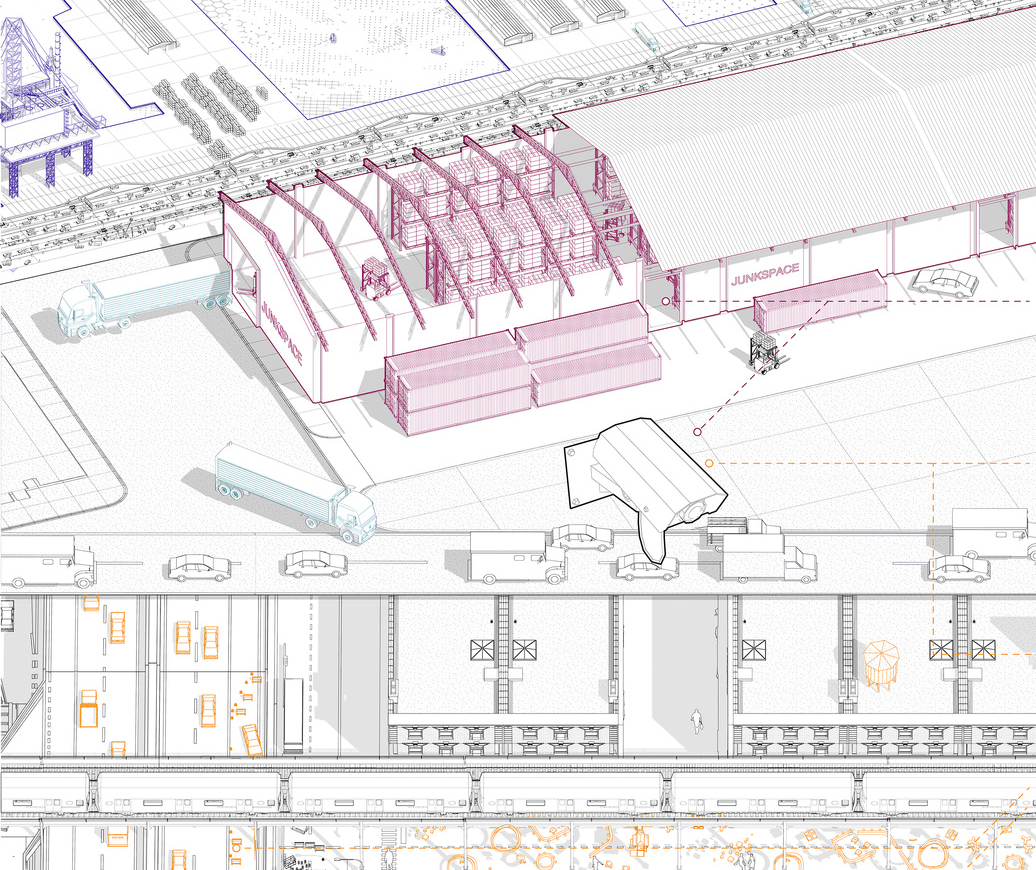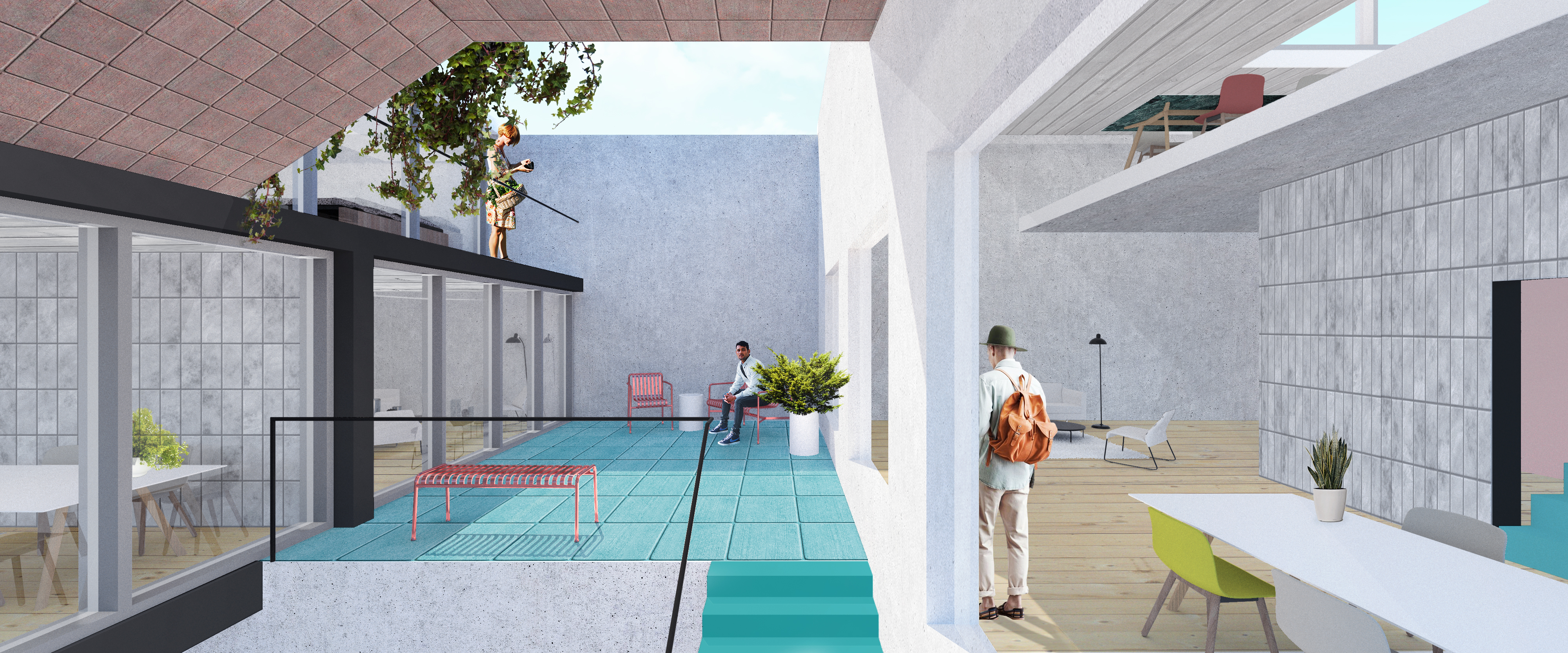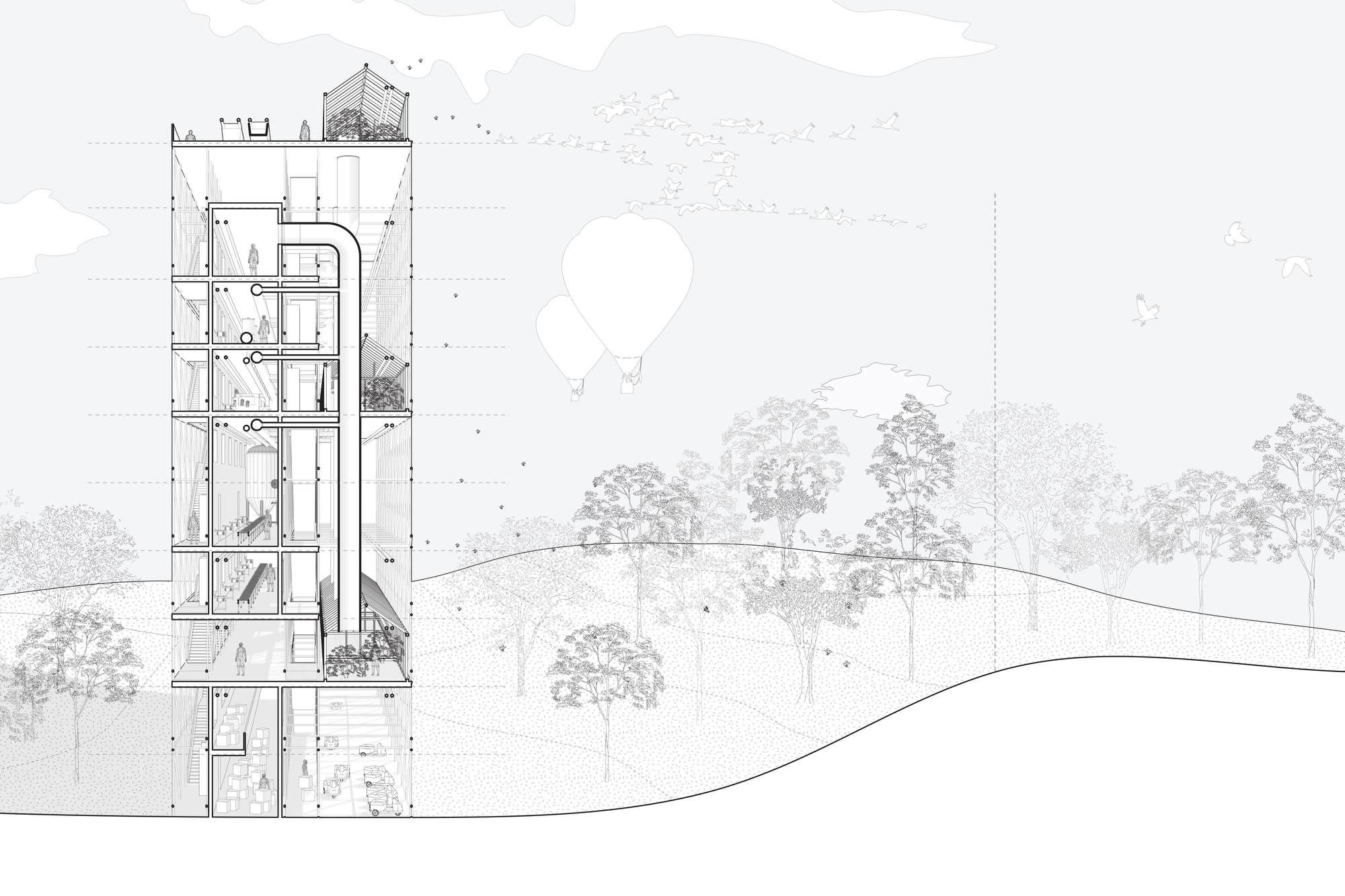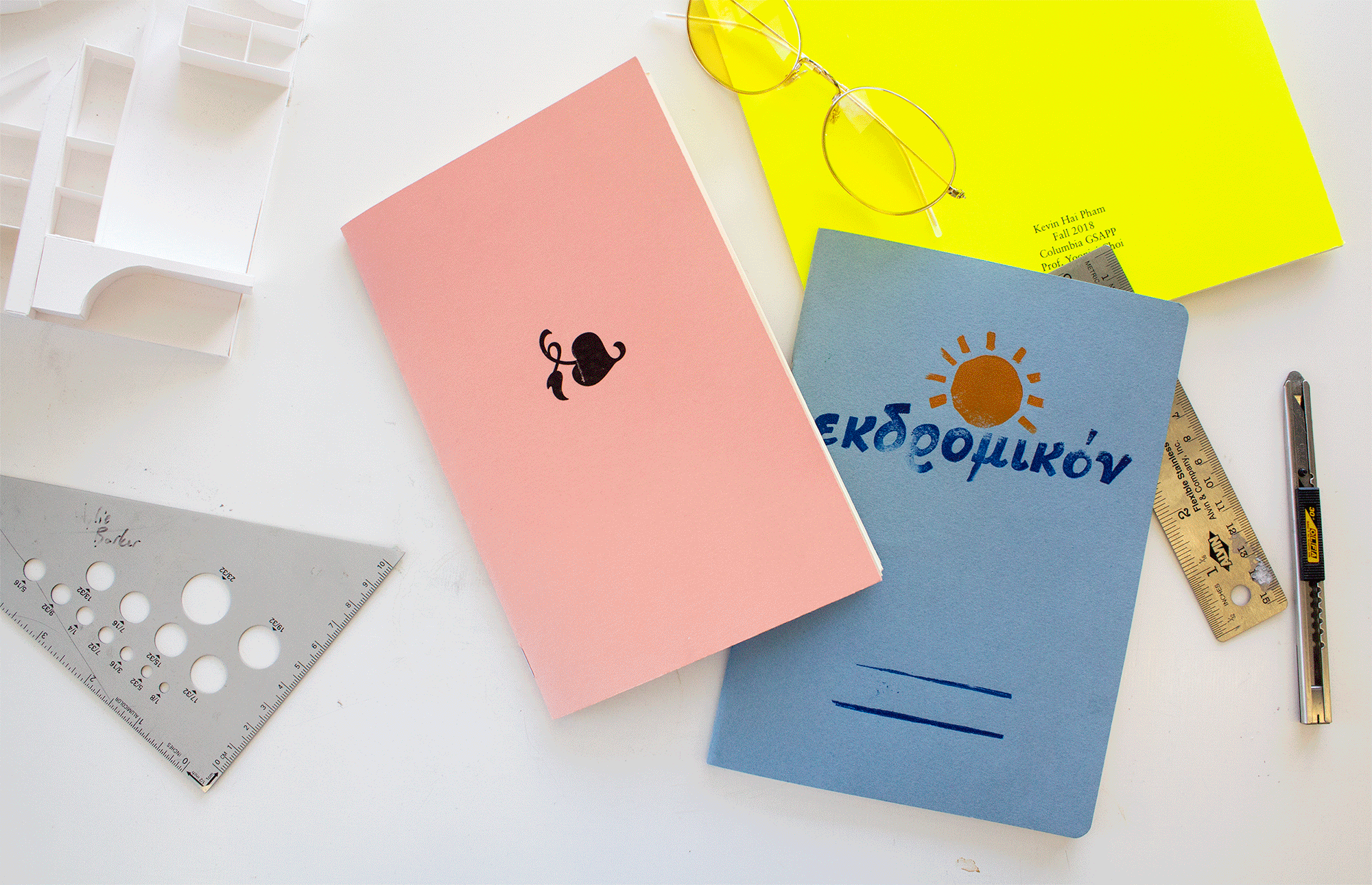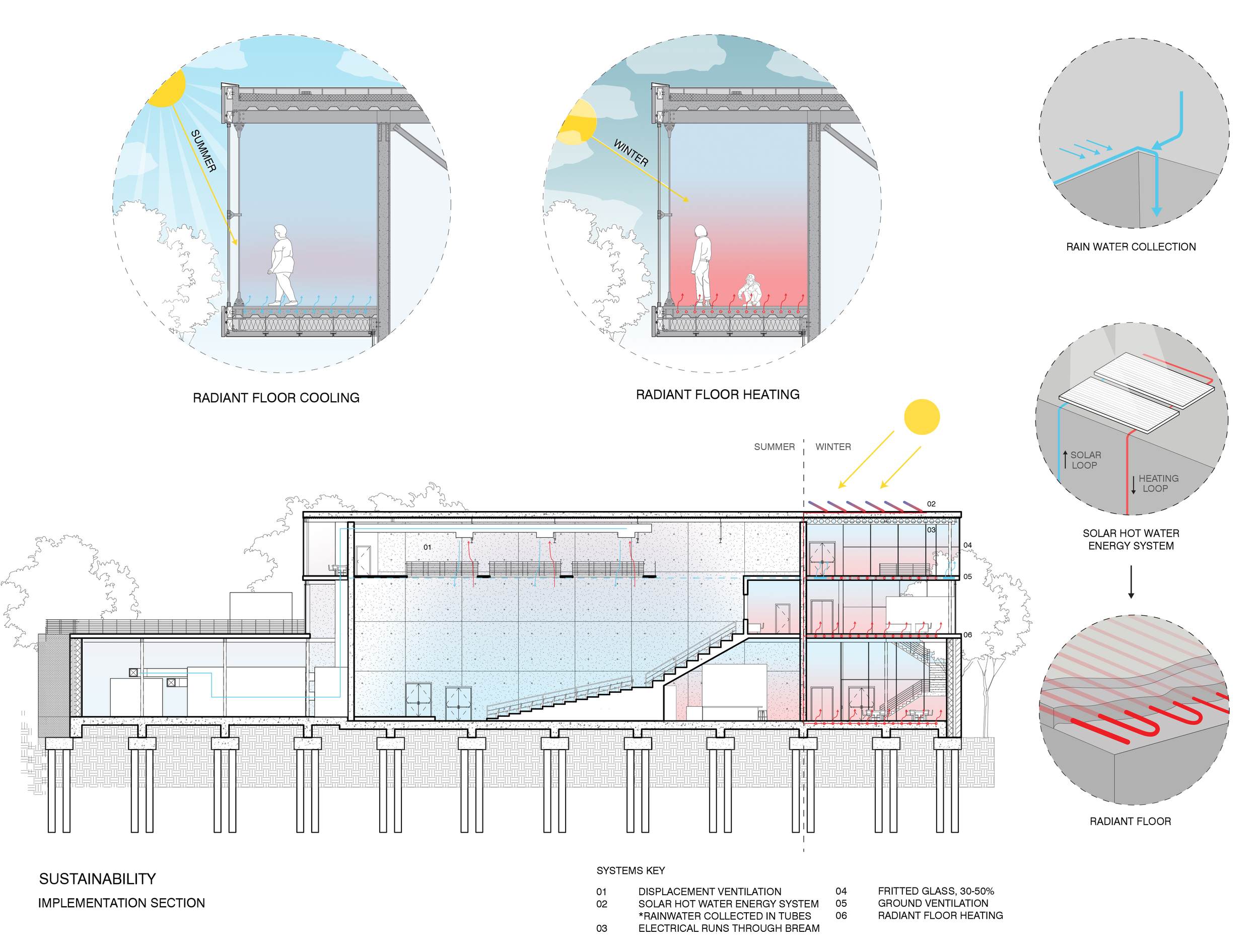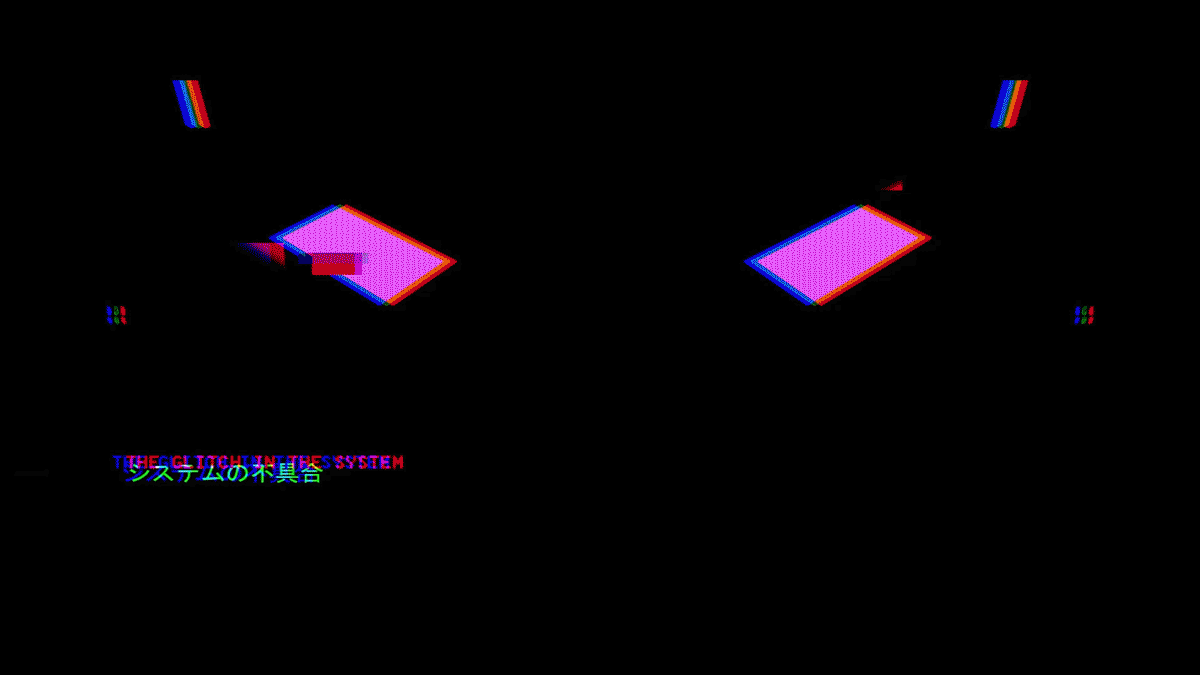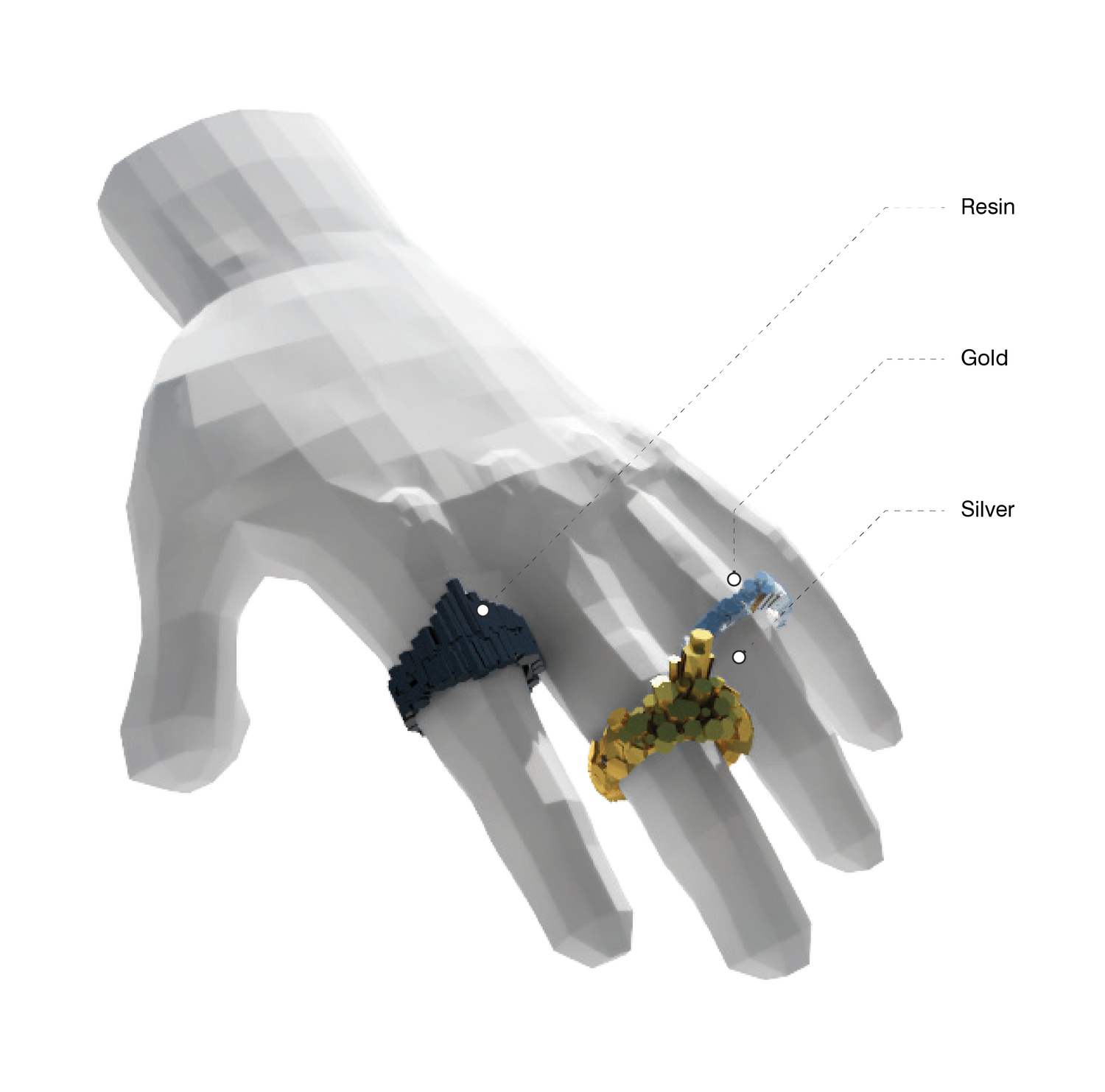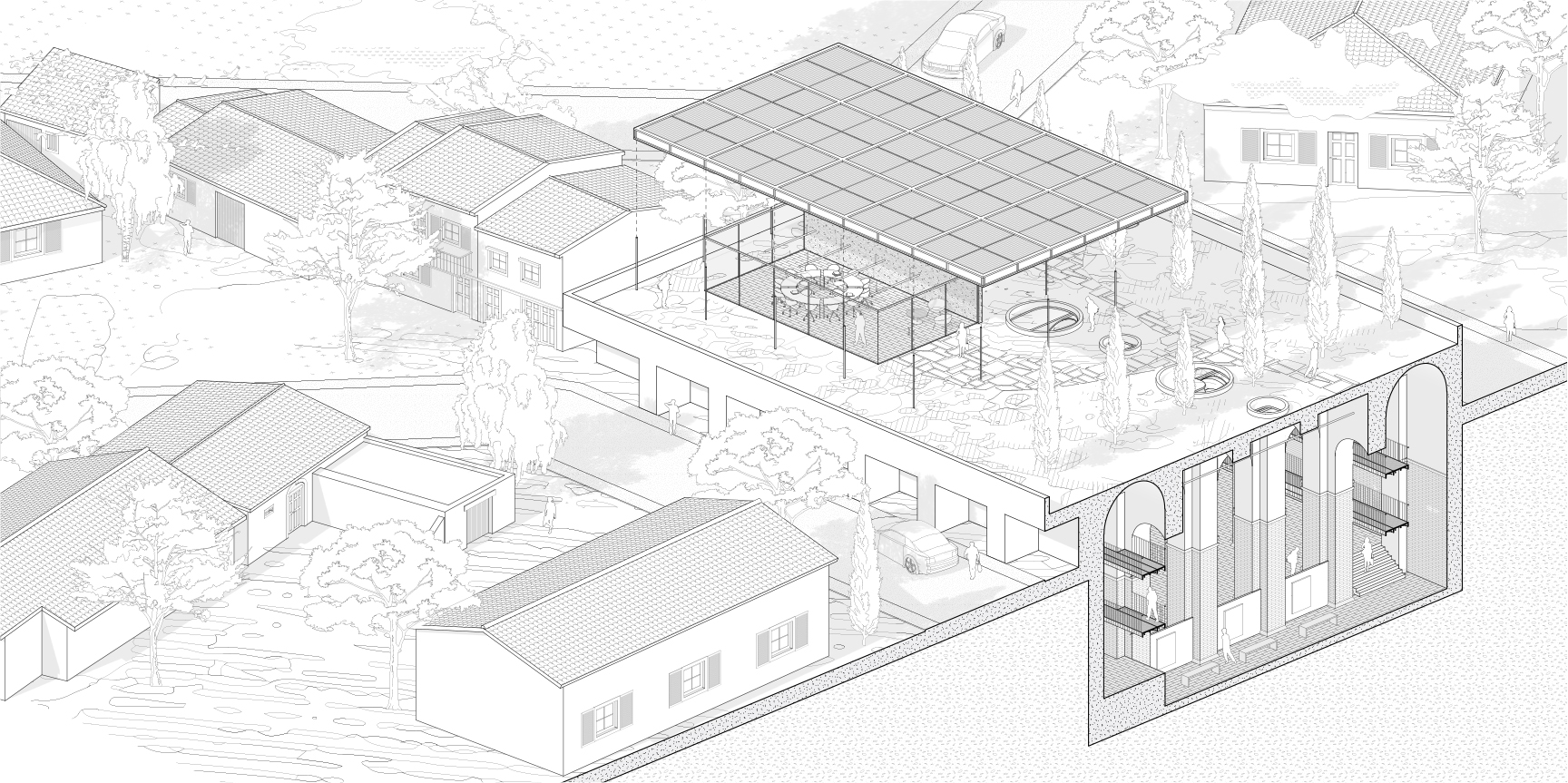
Summer 2020
Located within the Piscina Mirabilis, a cistern dating from the Roman Empire found in Bacoli, Italy, Armature and Ruin posits a “contemporary” art museum that questions the relationship between the ancient and the contemporary. The complex site, a phenomenal and voluminous ruin, poses a series of challenges that simultaneously question the historicity of the modern museum and tempers the architectural approach to the project. Conceptually, the project consists of the insertion of a light, delicate armature into the project that allows it to sensitively engage with the existing architecture while simultaneously providing novel and engaging experiences of its interior volumes, and therefore the art contained within.
Programmatically, the museum is proposed as a museum of contemporary archaeology, where contemporary artists operating in dialogues with and within the milieux of Classical art are able to display their work in context. These artists include (but are not limited to) Italian sculptors such as Massimiliano Pelleti, Domenico Ludovico, and Gianni Caravaggio, whose works, like the proposed museum itself, build upon and refer to classical figures, proportions, and materiality. This artistic choice enforces the relationship between the old and new, architecture and art.


Building on the existing, rational grid that structures the ruin, the armature and organization of the museum follows clear and logical grid. The ground of the existing cistern is conceived as a free and neutral plan that allows for the flexible and practical arrangement of art and sculpture. The armature, fabricated with metal to contrast with the existing ruin and placed at its periphery, creates a new, sectional relationship with the cistern; occupants are able to circumambulate the ruin via through a delicate, metal framework or meander freely on the ground plane. The ground plane is clad in terracotta tiles to assist in the preservation of the ruin, pay homage to its Roman origins, and further establish the conceit between ancient and modern. The armature additionally permits for the viewing of sculptures from new perspectives, whether from the ground or in the air, allowing for flexibility in scale.
The programmatic requirements of the museum are located within the armature itself, and the existing volumes of the ruin are subdivided into different levels at it ends, creating spaces that allow for the reception of visitors, a small cafe and lounge area, a separate exhibition space, and spaces for offices, bathrooms, and storage. By placing these within the existing grid at the edge of the cistern, a large, singular volume is maintained for the display of art. Above the cistern, a gathering pavilion is created to allow for conferences, exploiting the expansive, surrounding views of the Phlegraean fields and the Tyrrhenian Sea. The design incorporates a roof garden which is organized by the grid of the cistern, and a grid of cypress trees relates the exterior with the interior, allowing for the free meandering of visitors within an open, above-ground sculpture park. The existing skylights serve as moments where the above-ground and below-ground can be experienced simultaneously.
The structure of and organization of the museum, informed by sensitivity and a delicate approach to its formidable architecture, engenders a dialogue between ancient and modern, revealing and questioning layers of time, history, and culture. With a concerted effort in building upon the old to create new relationships, Armature and Ruin mediates the site’s inherent complexities to produce a new, cultural institution that at once questions existing, chronological divisions of and notions of time and history while simultaneously remaining a space for the timeless display of art.
